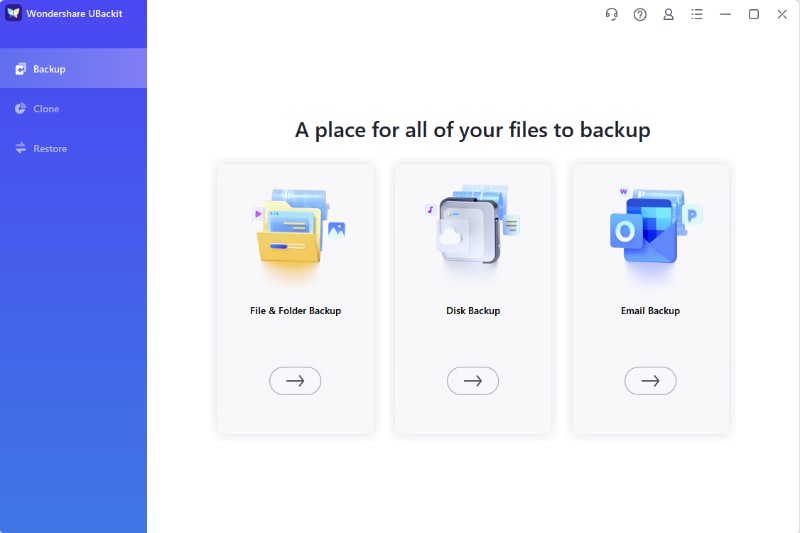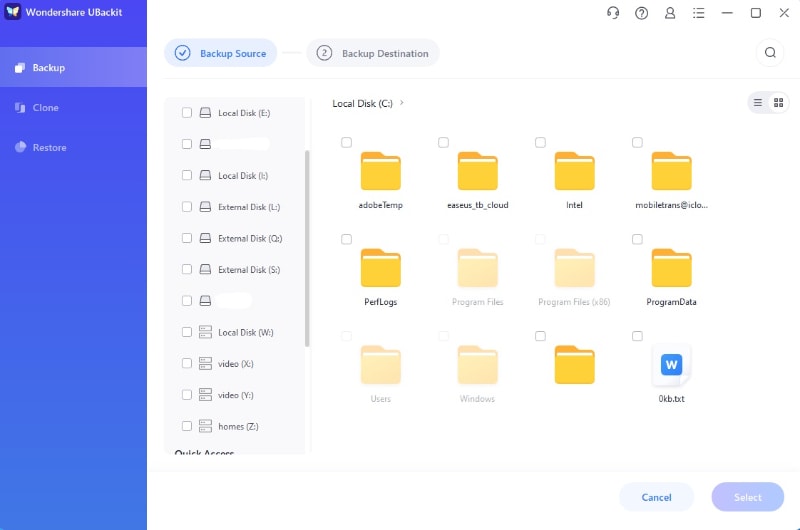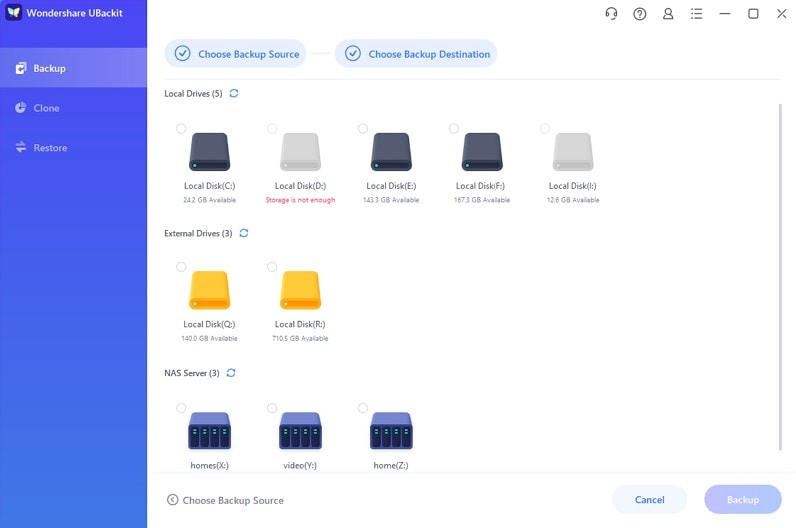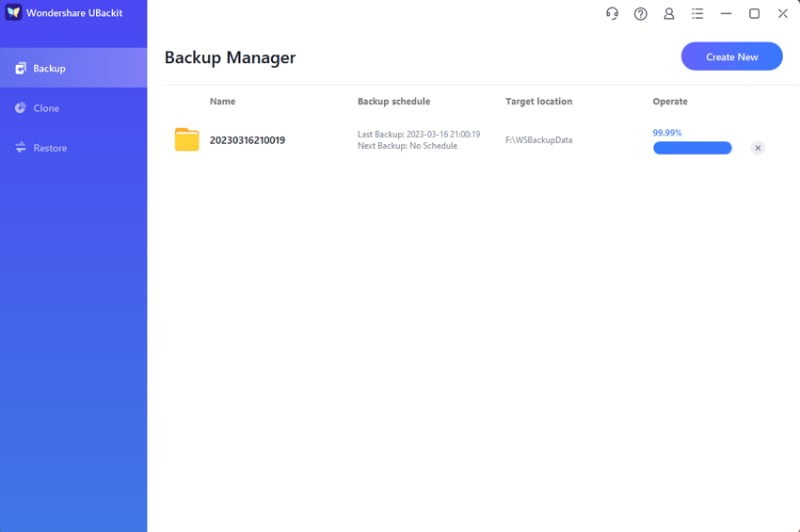How to Choose the Best Backup Software
Currently, the most efficient and dynamic way to create and share information is through technology. Every day we interact with digital information, this greatly facilitates our daily tasks and allows exponential development in all industries in the market. Unfortunately, not everything is perfect. It is common to lose or damage information and therefore there are prophylactic methods whose purpose is to reduce setbacks to a minimum. In this post I will explain everything you need to know about the backup processes, in this way, you can wisely choose the right software to back up your information.
Part 1: Choose the Best Backup Software
"Q: How should I choose the correct software to back up my information?"
Backing up your information manually in some cases can be simple, however, for a backup to be always up-to-date, you must create a copy every time you make any changes to the original file, which can become a problem. To avoid this, there is various specialized software for backing up information. Here I will show you the criteria you should consider before choosing a backup software.
- The Essentials of a Good Backup
Backups are used to be prepared in case you lose your information, either due to technical failures or simple errors, for this reason, it is important that backups remain up-to-date and affordable.
There are different types of backups. Next, I will tell you about some of them.
- Image backup and restore: There is the possibility of creating a recovery image to solve problems in Windows, this allows you to restore the correct functioning of Windows with just a few clicks.
- Files and folders backup and restore: Creating backups of the files and folders that you use daily is highly recommended, this allows you to have an alternative version in case you make changes that you want to revert or simply have a copy available in case you lose, damage or delete the original version.
- Disaster recovery: A Disaster Recovery allows us to recover virtual machines with all their configurations, programs, installed licenses, and all the information stored in them. This method is more efficient when looking to back up a considerable amount of information, as in the case of servers.
Part 2: How You'll Use Your Backup
It is important to be clear about the purpose of backup copies, not all methods will be useful in all situations and therefore you should use the method that best suits your needs.
- Restore files/folders: If what you want is to be sure that your documents, files, and folders will be safe, the best way is to opt for a manual file backup method.
- Restore a drive to a previous state: Depending on the configuration, Windows creates backups sporadically. You can restore a folder, disk, or operating system settings to an earlier point. This option can be extremely useful to correct many problems at the same time or reverse wrong settings.
- Repair problems caused by operating system (OS) failure: You can create a Windows recovery image. This process collects information from your installed hardware and software to create a repair tool for your operating system. This is a very reliable method that will allow you to solve various types of problems in your operating system.
- Restore to a new drive: Windows recovery images can be used to restore the functioning of your operating system. There are occasions when the source of the problem is due to a physical malfunction of the storage device, for this reason, the Windows recovery image allows you to reset the system by migrating the configuration to another device.
Part 3: Where to Store Your Backup
Once you have decided which backup method best suits your needs, you will need to choose where you want to store your backups. There are currently two types of storage that you can use to store your backups.
- Physical storage: Physical storage media have varied costs, depending on the storage capacity they have, however, they are very easy to handle and most are easy to transport.
- Cloud storage: Cloud storage services are usually affordable and a stable internet connection will be enough to access all your information from anywhere, however, some restoration processes are not entirely compatible with this type of storage. For example, repairing your operating system.
Types of Storage Media
Next, I will mention storage types and describe their main characteristics.
1) Storage drives
Flash Memory Devices: Flash devices are very practical and easy to transport tools; however, they usually have strongly limited storage capacity.
HDD: Hard Drive Disks will allow you to store a much greater amount of data and there are portable hard drives that will allow you to transport your information with great ease. You must bear in mind that hard drives are fragile devices and therefore you must treat them with care.
SSD: Solid State Disks have a greater storage capacity, have excellent performance, and are very easy to transport, however, the cost of these devices is usually higher than that of the other options.
2) DVDs: DVDs are very cheap and easy to transport options, however, they have several limitations, such as their storage capacity and their compatibility with many modern computer models.
3) Cloud storage/backup: Cloud storage is perhaps the most secure option and allows you to expand your storage capacity very easily, however this option is not feasible in some cases, mainly when it comes to operating system repair or if for some reason you don't have a stable internet connection.
Part 4: Backup Strategy
Now that you know the storage options and are clear about the purpose of your backups, it is important to create a backup strategy that efficiently serves its purpose.
1) Full backup: A full backup is easy enough to understand. It is an identical copy of information from a computer and for this reason, it is a process that requires a large amount of storage space. Despite being the simplest method, it is also the most necessary, because any other backup method will use a full backup as a reference point.
2) Differential backup: Differential Backup is focused on identifying and storing the changes made since the creation date of your Full Backup. This saves a lot of space and covers any changes made between creating a Full Backup and a Differential Backup. The recovery process from this method requires only two assets, a Full backup, and a Differential Backup.
3) Incremental backup: An Incremental backup is focused on identifying and storing all the changes made since the last backup process. This generates a large number of versions and enables very accurate data recovery. The recovery process from this method also requires a Full backup and will use any other incremental or differential backup to complement and make this process more precise.
Part 5: Types of backup and other features
Now that you know the three main backup strategies and you are clear about the limitations and advantages of each one. It is time to choose a software that can perform your backup processes effectively and efficiently.
Next, I'll talk to you about the requirements for the most common backup processes.
1) File and folder backup: To back up files and folders you must take into account two factors; the weight of the files and the consistency with which you make changes to them. If the frequency of changes is low, you could focus on creating a Full Backup and performing Differential Backups once a week. The storage capacity of the device where you store your backups must be proportional to the weight of the type of files you use.
2) Disk Backup: Creating a Disk Backup is a highly recommended prophylactic measure. In most cases, it will be enough to use the Windows recovery tool to generate a Disk backup, however, you can use specialized backup software to ensure that your Disk image remains updated. For this type of situation, it is advisable to opt for a Full Backup with Incremental Backups per week, in this way, you will always have your Disk image updated without taking up much space.
Try Professional Backup Software
Using professional data backup software will greatly facilitate backup processes. Next, I will tell you about Wondershare UBackit and show you in detail how to use it.
Step 1 Launch Wondershare UBackit

Step 2 Select E/D/F Partition or Disk

Step 3 Choose Backup Destination

Step 4 Evoke And Finish The Backup Process

When the backup process finished, you can choose to "Set Auto Backup" to release you from backup worries. Just click on "Settings", you can backup your hard disk daily, weekly, monthly or even non-stop.
Conclusion
Manually backing up your information will always be an option, however, keeping your backups up to date can become an extremely challenging task if you make constant changes to your files or if you want to keep a backup copy of your operating system, as it is automatically updated day in day out. Fortunately, backing up your information with the help of professional software like Wondershare UBackit is very simple and allows you to keep your backups updated in an automated way. A couple of clicks and it will be enough to have an updated backup available in the event of a failure.
Data Backup Services
- Computer Backup
- Hard Drive Backup
- Mac Backup
- Cloud Backup






 ChatGPT
ChatGPT
 Perplexity
Perplexity
 Google AI Mode
Google AI Mode
 Grok
Grok
























Amy Dennis
staff Editor